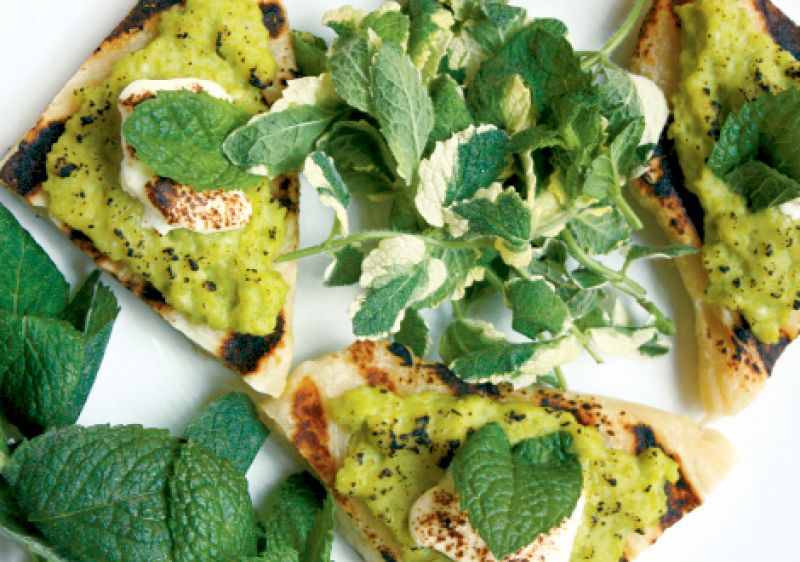
“Mint has long served as an herb of hospitality. Ancient Grecians wiped the table with it before a meal, and Middle Easterners welcome guests with mint tea,” says Michelle Weaver, executive chef of Charleston Grill. And considering Charleston is known for its hospitality—not to mention hot-as-blazes summers—cooling mint makes a natural addition to steamy-season menus.
“People associate mint with desserts, but it really brightens savory dishes as well,” notes Weaver, an Alabama native and New England Culinary Institute grad. She uses it for that very purpose in the contemporary Southern fare at Charleston Grill, where she worked as sous chef for 11 years before taking the helm in 2009.
“Mint is really easy to grow in a container at home,” says Weaver. It was her own backyard crop that inspired a simple appetizer: butter bean and mint bruschetta. “I was hosting a little post-beach grill-out and had butter beans on hand, so I puréed them with mint and threw flatbread on the grill. Everyone loved it!”
Fresh pizza dough or a baguette can be subbed in for the flatbread, and you can make the butter bean mixture the day before. “Just add the herbs at the last minute so they don’t brown,” notes the chef.
What else to do with your mint crop? Put it to work in another Weaver secret weapon, cucumber-mint water (find the recipe at charlestonmag.com). “I started making it to keep my kitchen guys hydrated, and now a lot of my friends keep pitchers of it in their fridges too,” she says. “Some combine it with vodka or gin!” The herb also makes “a nice surprise” on top of grilled fish or salads. “It’s a great way to add flavor without adding fat.”